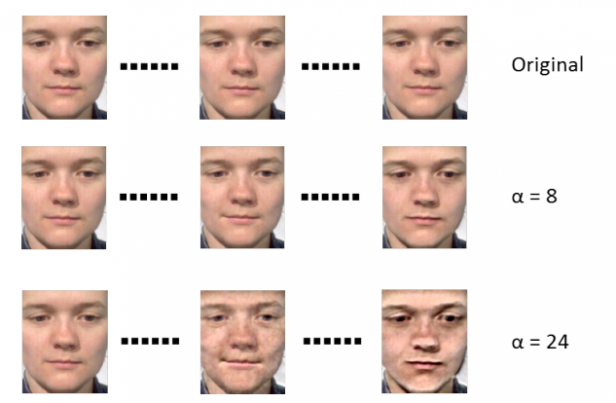It makes no sense to lie: computers have learned to identify hidden human emotions

On the face of a person, any emotions are displayed, no matter how hard the person tries to hide them. Both a person and a machine can recognize ordinary emotions, but now we are talking about microexpressions, facial expressions, which are almost invisible to others. An algorithm has now been developed that identifies these mini-emotions and recognizes them.
Previously, only trained professionals, such as police officers, employees of special services, and psychologists, were able to do this (and even not so well). Now cars can do the same, and with greater precision than humans. The author of a project to study microexpressions and teach computers to identify such emotions is Xiaobai Li from the University of Oulu, Finland and several of his colleagues.
The team was able to create and test in operation the first system that can detect and identify microexpressions, minimal facial expressions of a person’s face. And the machine performs this task better than people. The development of this technology was made possible by advances in artificial intelligence and cognitive learning. The algorithm itself would be useless without a large database that is used to train machines.
')
Thus, the first task of Lee and colleagues was to develop a database of video demonstrating microexpressions of a human face in real conditions. It is more difficult to do than to say. The desire to hide their emotions appears in a person not so often, and on the camera it is even harder to do. But you need to make a base, since microemotions are significantly different from ordinary mimicry.
Lee and colleagues decided to try this method: a group of 20 volunteers were asked to watch a few videos that usually cause strong emotions in a person. At the same time, people were told that they would have to fill out a very large questionnaire, describing in detail each manifesting emotion. And most volunteers hid their feelings under the mask of indifference.
So did 16 of the 20 people who participated in the study. In total, 164 manifestations of microemotions were recorded, all this was recorded on a camera, the shooting was carried out at a speed of about 100 fps. The team then linked the emotions of each person with the emotional content of the video, developing a framework that was used to train the machines.
For a computer system, the task of recognizing microemotions is divided into two parts. The first is to determine the change in a person’s facial expression and describe it as a microemotion. The second is to identify microemotion. The first task was solved by comparing a truly unemotional facial expression of a person with images of micromimics. Any change in facial expression was defined as a microemotion.
The second task, the recognition of emotions, was even more difficult. The team decided to enhance micromimics by fixing the movement of parts of the face while changing the expression. The focus was precisely those parts of the face that define the expression of emotions, and not just move. Then the algorithm was taught to identify emotions as positive, negative or an expression of surprise.
After everything was ready, the developers decided to compare how well people cope with the task of identifying and identifying microemotions. After conducting a series of tests, the developers were convinced that the machines do this better than people. It is about the superiority of computers in the identification of microemotions, and in their identification.
Where can I apply the development? There are no special questions here - the technology can be used as a lie detector, in law enforcement agencies, psychotherapy, and in interviews. If you are already fantasizing, then you can imagine working with such an algorithm using a gadget like Google Glass.
Source: https://habr.com/ru/post/367029/
All Articles